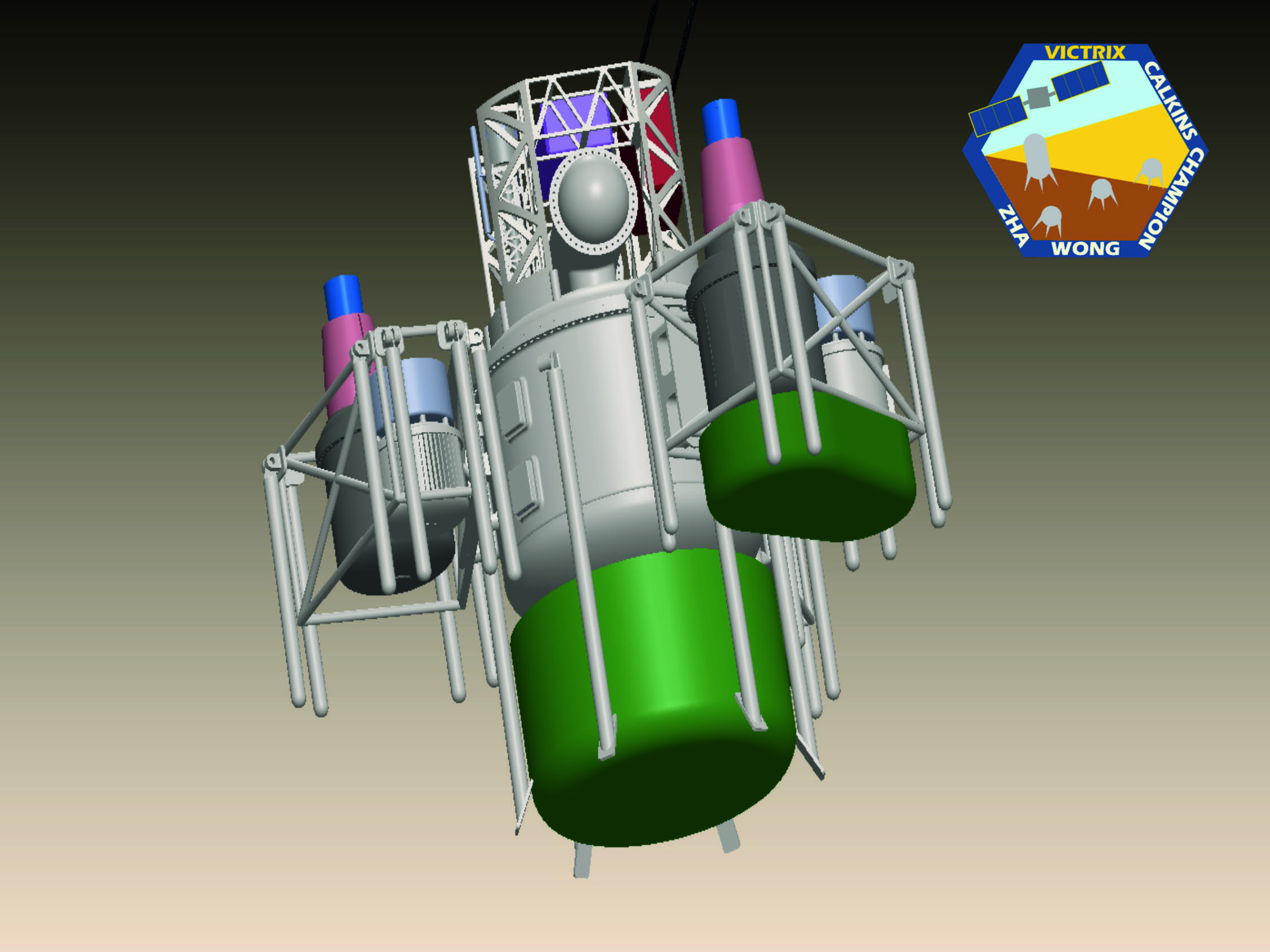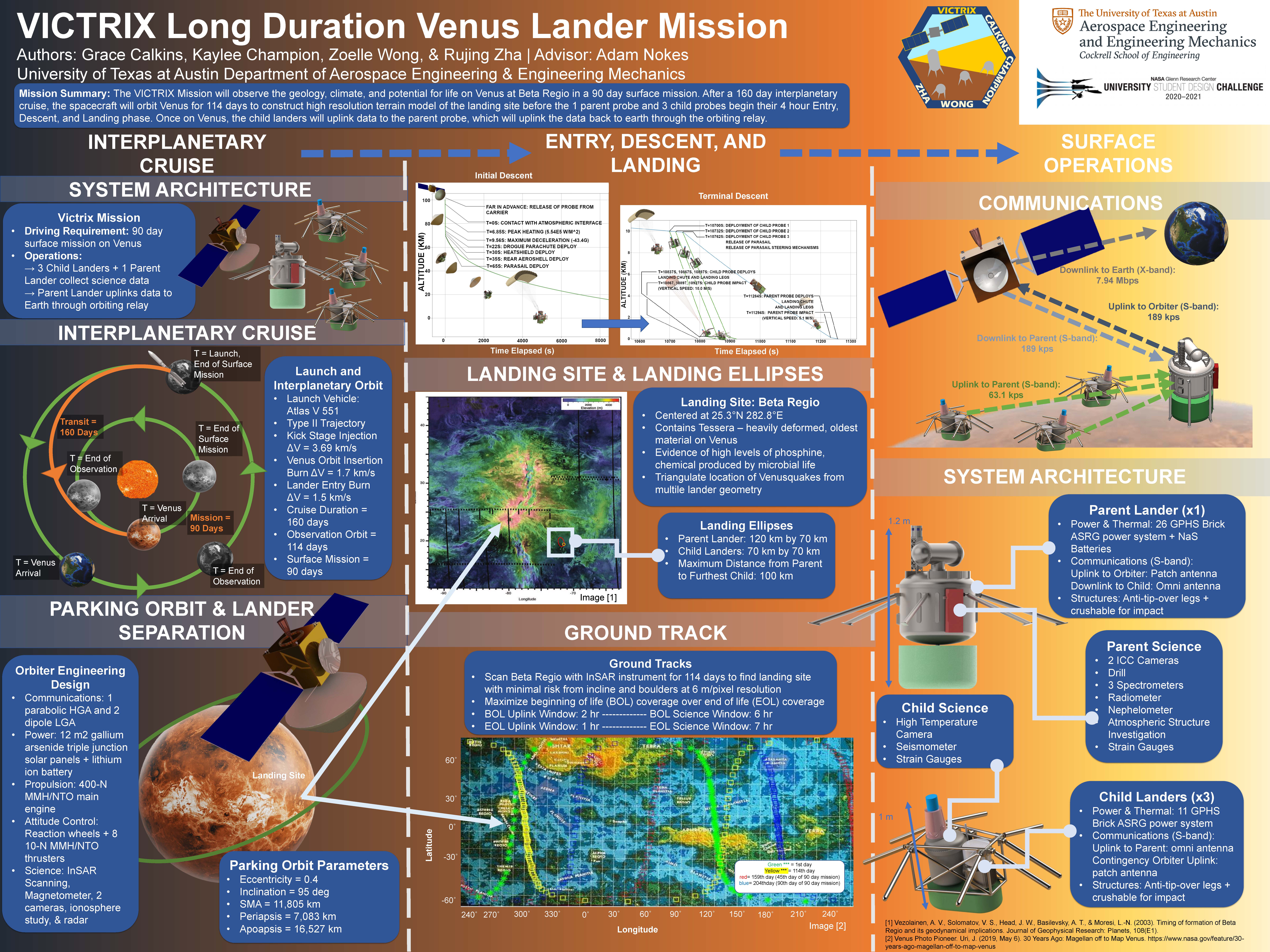We’ve heard a lot about missions to Mars lately, but what about Venus? It’s been 40 years since a spacecraft has landed on Venus. NASA’s interest has spiked in Earth’s planetary neighbor, and aerospace leaders of tomorrow are already tackling the hurdles of landing on our so-called sister planet.

A group of students from the Cockrell School of Engineering at The University of Texas at Austin won a NASA design contest for a Venus lander with an ambitious project that could someday, if realized, teach us a lot more about the planet. The craft, named Victrix, was created by students in the Department of Aerospace Engineering and Engineering Mechanics and it won one of the two categories of NASA’s Glenn Research Challenge.
The challenge involved designing a surface system capable of ground and atmospheric analysis of Venus while surviving on the surface for at least 90 days. The team designed a spacecraft that would spend nearly half a year on an “interplanetary cruise,” followed by four months of orbiting Venus. Then the craft will drop a “parent probe” and a trio of “child probes” onto the planet’s surface.
“We chose to have multiple types of landers so that we could do multiple types of science and engineering — drilling and seismology — and to explore multiple sites around Beta Regio on Venus, which was a bonus for the challenge,” said Grace Calkins, one of the team members and a 2021 aerospace engineering graduate.
In a real-life situation, such a landing would be risky. Calkins said that boulders could damage or destroy the probes upon landing, and the terrain could block the landers’ communication paths.
This challenge is the latest example of NASA’s renewed interest in Venus. The organization recently announced approximately $1 billion in funding for two new Venus missions to launch toward the end of the decade.
Why all the sudden interest in the planet? Venus has a lot of characteristics in common with Earth, and NASA notes that it may have been the first habitable planet in our solar system. The missions will seek to understand how the planet went from an Earth-like climate, complete with oceans, to an uninhabitable, “inferno-like world,” as NASA describes it. And this has implications for Earth and the challenges it faces with climate change.
“For me specifically, the Venus lander idea was appealing because of how little we know about Venus right now, relative to Mars,” Calkins said. “When NASA originally sent probes to deep space, they chose Venus first as the most interesting target, but now Mars gets all the attention.”
The UT Austin team was advised by Adam Nokes, a lecturer in the Department of Aerospace Engineering and Engineering Mechanics. The project came out of a spacecraft/mission design course for seniors. Student designers on the team included Calkins, Kaylee Champion, Zoelle Wong and Rujing Zha.
Calkins is headed to the University of Illinois at Urbana-Champaign to pursue a master’s degree in aerospace engineering with a focus on entry, descent and landing; Champion plans to pursue a Ph.D. in aerospace engineering at the University of Colorado Boulder, working in the Autonomous Vehicle System lab; Zha is interning at NXP semiconductors in Austin with plans to start a Ph.D. program in mechanical engineering at Northwestern University this fall; and Wong is entering her final undergraduate year, double majoring in aerospace engineering and Chinese, with plans to graduate in May 2022. Wong is interning part time at the NASA Jet Propulsion Laboratory this year and plans to pursue a Ph.D. in aerospace engineering, with a focus on computational fluid dynamics.
The students complemented each other well and lauded the close relationships this challenge helped them build.
“Mission Victrix was a remarkable journey and I couldn’t ask for a better team,” Wong said. “This project offered many opportunities for growth because less information is known about Venus. Every team meeting felt like a new adventure, and it was amazing to see our progress after each milestone.”

